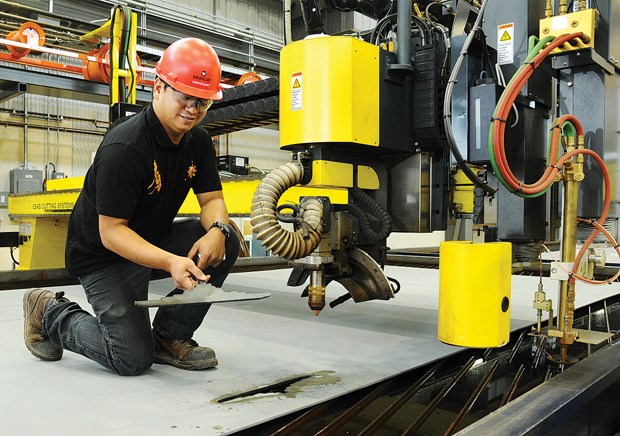A new cable ferry that will run between Buckley Bay and Denman Island will be the first vessel built in Seaspan's modernized new shipyard.
A steel-cutting ceremony Wednesday in North Vancouver marked the start of the project, expected to take about eight months.
Construction of the relatively small 78.5-metre ferry marks the first time Seaspan's new shipyard - modernized at a cost of about $185 million - will be put into use.
"It's a very good project for us," said Brian Carter, president of Seaspan Shipyards. He said building the ferry with the new system will allow Seaspan's workforce to get familiar with the new system before they move on to bigger ships.
The system was built as part of an agreement with the federal government to supply a fleet of noncombat ships worth over $8 billion in contracts over the next 30 years.
Essentially, "the new facility is more like a manufacturing plant," said Carter, and makes use of computer-driven and robotic equipment. "There's a lot more automation in the process.
"The same number of people can be much more productive."
Earlier this year, a new gantry crane that stands 80 metres tall and is capable of lifting 300 tonnes was installed at the shipyard as part of the project.
The 200 trades people who work in the shipyard have been training on the new equipment over the past year, said Carter - particularly in the past month. At the peak of the ferry construction, about 100 of those employees will
be working on the project.
The cable ferry, which will take 50 vehicles and 150 passengers, is expected to be in service next summer.
Seaspan earlier bowed out of the competition to build three new intermediate-sized LNGpowered ferries, saying it could not do the work and complete the federal contracts at the same time.
The $165-million contract to build those ferries has now been awarded to a Polish shipyard.
Work on the federal vessels is expected to begin at Seaspan at the end of October, starting with an offshore fisheries science vessel.
That project is expected to take about 18 months. Seaspan will build three
fisheries science ships and an oceanographic vessel before starting work on the two joint support ships for the navy and polar icebreaker sometime between late 2016 and 2017. Those ships will be the biggest ships ever built in western Canada.
The workforce at Seaspan is expected to grow to about 1,000 at that time.



